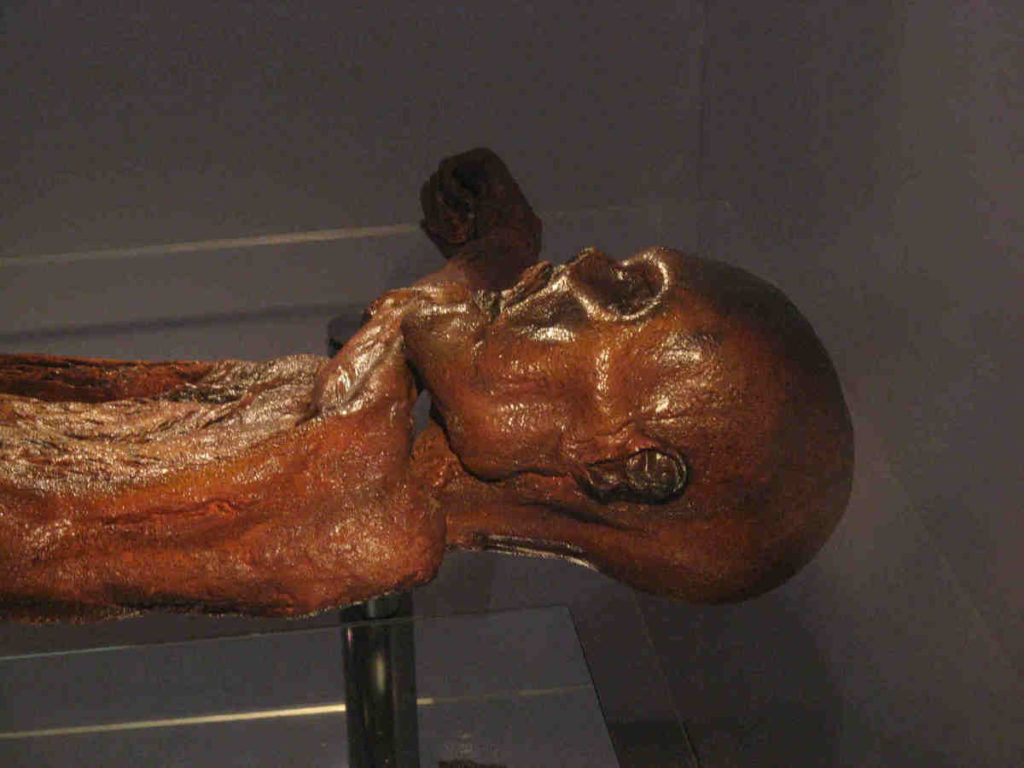Dead bodies from thousands of years ago. What at first might sound a little gross is actually really interesting. It is impressive that the mummification stops the process of decomposition. However, these mummies can also reveal secrets about the ancient world in which the people use to live in.
Mummies are basically corpses that are protected from decomposition by natural circumstances or artificial processes. The ancient Egyptians, for example, mummified their dead for religious reasons.
Deserts or perpetual ice provide perfect conditions for a preservation of corpses. But not only extreme climates, also bogs can be the reason for mummies’ existence. Dead bodies that have lain in the desert, the bog, or the ice for thousands of years are still in good condition today. The process of decomposition doesn’t work under these circumstances, due to the very little oxygen that surrounds the body.
Without the process of mummification, a corpse would decay very quickly. 70 percent of the human body is water, and bacteria spread in this water. Two to three days after the death of a person, the rigor mortis dissipates, and the three-month rotting process begins. Bacteria produce foul-smelling ammonia gas and hydrogen sulfide. Then decomposition sets in: flesh, organs, and skin are decomposed by bacteria and fungi.
Four years later, everything that is left is the skeleton. Twenty to twenty five years later, there are not even bones left. Therefore, normally there is not much left in your body after a certain number of years.

‘Ötzi the Iceman’ is probably the most well-known mummy. He was discovered in the Alps in 1991. First, one thought that the body belonged to a modern mountaineer because it was so well preserved. But after some investigation, they realized he was from the Copper Age, which means he lived 5300 years ago.
The man’s mummy has given us a great insight into life in Copper Age Europe. Because of his genes, we know that he was a native of Central Europe, and his stomach contents revealed that he ate ibex meat. The man in his mid-40s also had some health issues like narrowing arteries and intestinal parasites. He treated his pain with acupuncture and medical herbs.
The ancient Egyptians believed in the afterlife. For that reason, it was common to prepare the dead bodies with specific procedures for the afterlife. The mummy served as a temporary residence for the dead until they arrived at the empire of God Osiris.

The corpses of rich people were dried with natron salt at that time. And after 40 to 70 days, the inner organs and brain would be removed, while the heart would remain in place for religious reasons. The body cavities were filled with resin, linen, or sawdust. Moreover the brain and offal were buried in special vessels called canopic jars. The body was then bandaged to protect it from rotting. In the course of time, the corpses dried into skeletons.
In imperial Egypt between the first and the end of the fourth century A.D., mummy images replaced the mummy mask, which until then had been placed over the head and shoulders of the dead.
The images were painted with wax or tempera on wooden panels or canvas. Finally, the mummy was placed in a stone coffin, the sarcophagus. Many valuable grave goods were interred with the mummies.
The discovery of King Tutankhamen’s mummy was astounding in many ways. The young pharaoh died at the age of 19, more than 3000 years ago. In 1922, his tomb was opened, and surprisingly for everyone, it had not been looted. One of the three coffins that the mummy was nestled in was made out of solid gold.
These grave goods capture a snapshot of ancient Egyptian history. Not only could scientists find the mummies of Tut’s parents but also discover more about his health condition. He had malaria and a rare bone disorder of the foot. A virus killed him, and some manipulations were performed on his corpse to link him closer to the god Osiris.
Whether the mummification happened on purpose or not, discovering the ancient bodies is always an opportunity to get to know more about the people, their culture, and their traditions. and last but not least an opportunity to travel back in time.
Sources:
https://www.livescience.com/famous-mummies-ancient-world (Stephanie Pappas ,18.01.2023)
https://www.planet-wissen.de/geschichte/archaeologie/mumien/index.html (Kai Althoetmar und Malte Linde ,18.01.2023)

